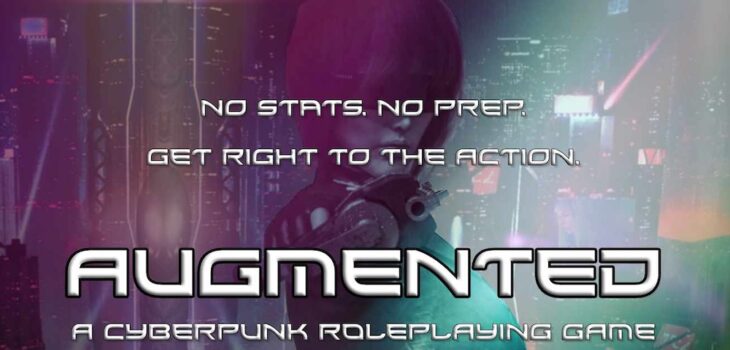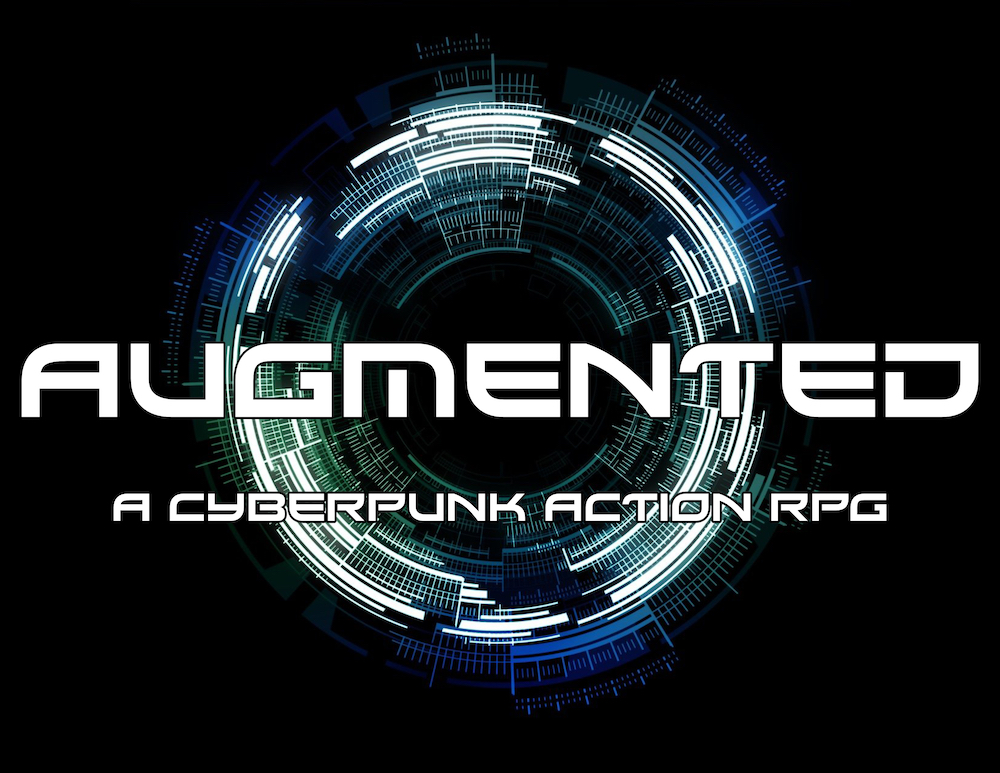 News & Updates
News & Updates
“Augmenting” AUGMENTED
Over the last few days, Augmented has gotten a bit of a facelift. While the core game mechanics are (relatively) unchanged, I wanted to provide more tools that would make it easier to run a session without doing the burdensome prep work that’s often associated with the genre.
We’re on a Mission from the Company
The headline addition is the assignment generator. Originally, Augmented featured a small 1d6 table that the Supervisor could use as a random starting point. There’s nothing wrong with this kind of table, of course. Weirdwood uses something similar, although it provides more than just six options. But I wanted something that was a little more dynamic.
Fortunately, I recalled a discussion I took part in on a Discord server recently where fellow game designer Jeff Stormer was talking about a villain plot generator for a superheroes game he’s been working on. Using that as my starting point, I came up with the following formula:
You must action a (an) target in a location at city site .
There’s a chart associated with each space that the Supervisor can reference to randomly create a basic cyberpunk mission. The big challenge, however, was coming up with six distinct actions, which basically determine the goal of the assignment. Here’s the list I ended up with:
Action (1d6)
- Acquire
- Eliminate
- Sabotage
- Embed
- Protect
- Interrogate
Most of these are pretty self-explanatory, but the trick was using words that were both flexible enough to be interpreted in different ways and apply equally as well to a “target” that was a person or an object. That’s why I went with “Eliminate” instead of “Terminate” or “Assassinate.”
The last entry, “Interrogate,” is the result of some Discord crowdsourcing. It’s a distinct action from the more straightforward “Acquire,” but it may not be immediately obvious how you can interrogate an object. Essentially, the “Interrogate” action tasks you with gathering information from someone or something without actually stealing it or removing it from a location. “Acquiring” a data file, for instance, would require you to download and deliver the contents of the file to the Company. “Interrogating” a data file, on the other hand, would mean accessing data to find out what’s in it, but not actually removing it or copying it from the system. It’s more of a discovery-based mission than a theft-based one.
So, as an example, here’s what a random Augmented assignment might look like:
You must protect a (an) executive in a power facility at the outer sprawl .
This gives a ton of information for the Supervisor to work with without overloading them with details. They can quickly start to imagine reasons why the executive might be in danger and the characteristics of the power facility. Since it’s located in the outer sprawl, it’s probably dirty, run-down, and hazardous in some way. Maybe it has a radiation leak or generates some kind of toxic byproduct.
I also added a few other lists detailing security levels, potential enemies, and mission complications that Supervisors can quickly glance at to generate ideas. In my experience of running RPGs with little to no preparation, having this kind of information on hand to spark ideas is incredibly helpful. By adding some of this material to Augmented, I hope the game will be even easier to manage on the fly.
Augmenting Augmentations
One area of the game that did get some substantial reworking is the augmentations section. Originally, I provided a list of 10 augmentations players could choose from and left it very open-ended about what they could actually do. That probably would have been fine to leave in place until I added some guidance on how to upgrade augmentations following successful missions. I wanted to leave those decisions totally up to the players, but the reality was that it was a lot easier to think of how to add new features to something broad like a cyberlimb than to something rather specific like “wired reflexes.”
So I pared back the augmentation list to just six basic types. While that may seem a bit restrictive, each type also has five distinct features associated with it. Now when players make their Agent or are looking to upgrade their augmentations, they can simply pick another feature from the list and get back to the playing. Of course, as with everything in Augmented, players and Supervisors are totally free to come up with their own ideas and use them instead.
Part of the reason I try to avoid restrictive guidelines is because it’s almost impossible for one person to come up with the best options for every unique group of players. If you don’t like something, change it or come up with your own thing. Augmented’s system is so sparse and adaptable that you don’t have to worry about breaking anything from a balance or mechanics standpoint.
And if you do implement something that doesn’t work, it’s not the end of the world. Just have a conversation about why it’s not working and either change it back or do something else instead. It’s a roleplaying game, not computer engineering. Nobody is going to kick down the door and yell at you for doing something different.
Preorder AUGMENTED Now

The added material has expanded Augmented from 20 pages to 28 pages 36 pages (another round of additions followed this post). I don’t anticipate anything else being included at this point, but I am going to provide a separate short guide that outlines the details of a ready-made cyberpunk setting. Augmented allows groups to create their own settings, of course, but it was conceived and written with a particular setting in mind that probably informed a few decisions along the way. The setting guide will detail the cyberpunk world I’ve hinted at in the short stories “Lena’s Song” and “The First Price.” I’m planning to make it available around the same time as the main game releases on March 30.
You can preorder Augmented now on itch.io! If you preorder before March 30, you’ll get the game at the special $5 preorder price rather than the $7 retail price. Someone asked me on Twitter recently if there will be a print version available and the short answer for right now is that I don’t know. I would like to do a print run, but I’m going to see how the experience goes with mailing out Weirdwood to Kickstarter backers first and then explore what it would take to set up physical distribution.
